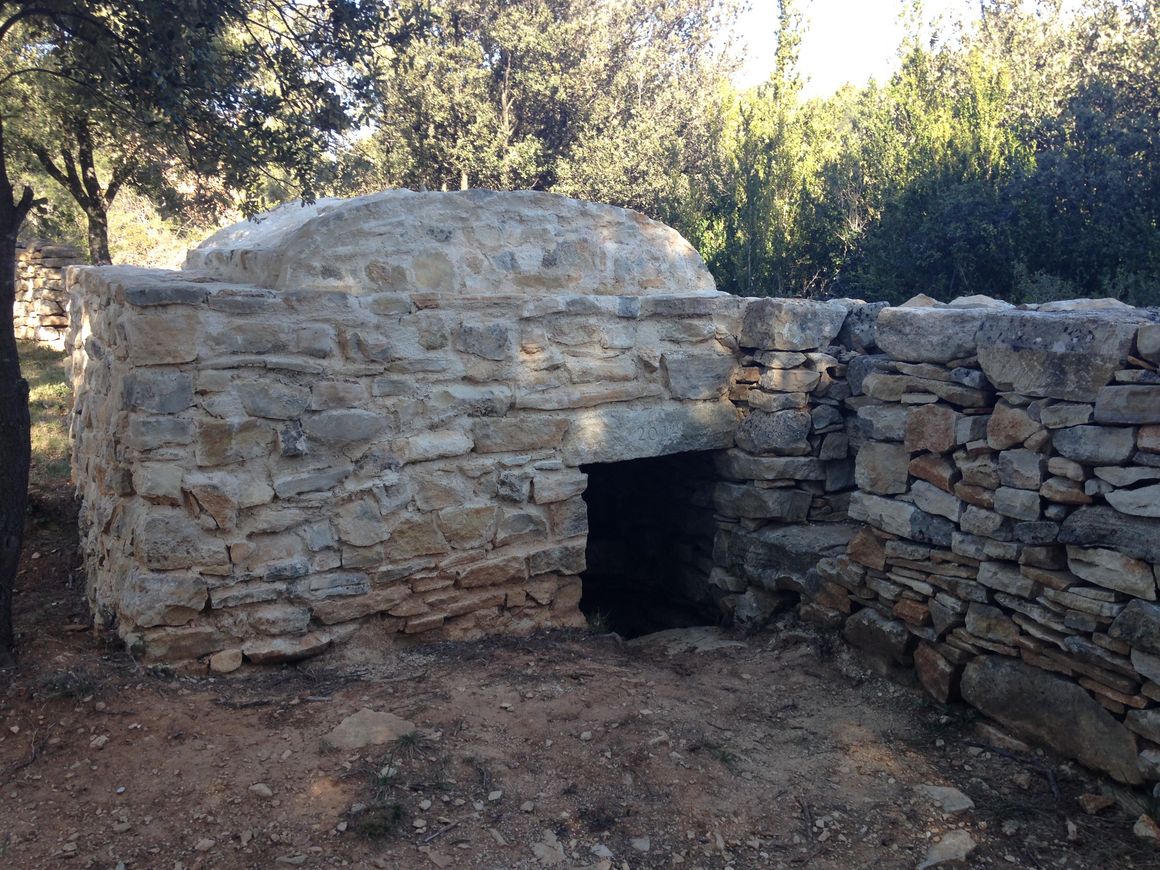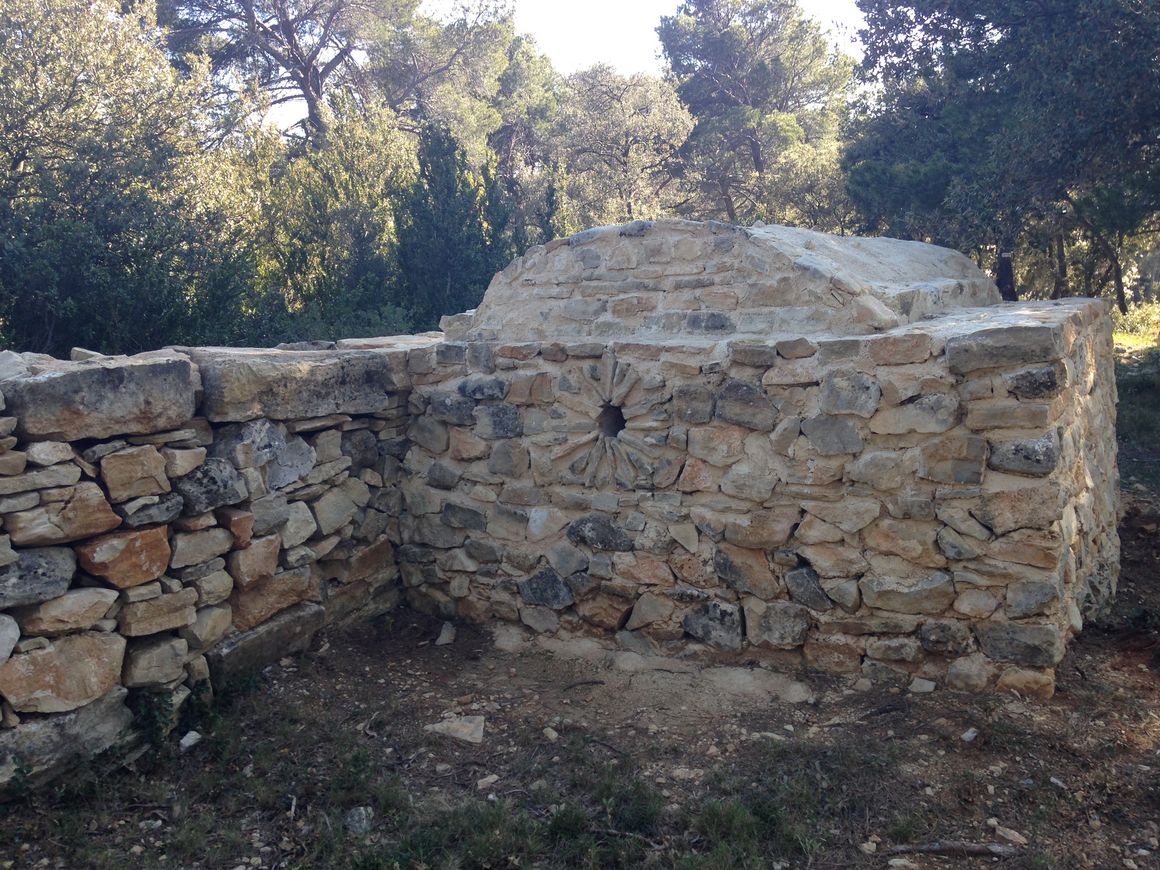The Monts de Vaucluse are formed primarily of limestone, where surface water is rare and the ‘aiguiers’ are therefore an important feature. Aiguiers are basins chiseled into the rock by hand with the aim of collecting rain water for human activities. They remain as a witness to these activities, often but not only, agricultural.
The aiguiers were born from necessity
The aiguiers are a symbol of scarcity. In this area of hard rock and thick layers of limestone it is almost impossible to reach the water table and build wells. In the piedmont of the Monts de Vaucluse it often involved intricate and complicated systems : water mines (or drainage galleries).
Using gravity would bring water from the water tables to the surface via gently inclined tunnels chiseled into the rock that lead to a reservoir . Capturing underground water was extremely complex generally with poor results. The last resort up on the Vaucluse plateau was often to retain run-off water, abundant on the impermeable ground. The aiguiers probably date back to the end of the 18th and 19th centuries.
From rudimentary open air basins to works of art !
The first cisterns were simple open air cavities where the natural water flows converged, guided by some roughly chiseled grooves. The systems gradually improved, starting with barrel/tunnel vaults (radiating stones), followed by corbelled vaults (stones stacked in a similar manner to the bories, self supporting structures).
Vaults were also carved directly into the rock, sometimes with rendering to improve the hygiene and impermeability. These vaults helped maintain the quality and temperature of the water whilst reducing loss from evaporation. They also helped to prevent animals from drowning. The water was recuperated with a bucket and a rope via a specific opening. Despite continuing ingenuity the construction of the aiguiers came to an end after the First World War with the desertification of the countryside.
What were the aiguiers used for ?
Water the flocks : In the 19th century livestock farming was one of the principal resources of the Sault plateau. But also..
• Domestic use (laundry, wartering vegetable gardens, cooking…)
• Craft activity (lavender distillation and its cooling coil system…) the many aiguiers in the isolated area between St Jean de Sault and Saint Saturnin d’Apt were probably for this use. • Transport (those situated along the main lines of communication, such as the road in the Nesque Gorge that linked Sault with the Carpentras Plain would have been used to water the horses of the stage coaches).
Modern day uses are fairly rare, just a few isolated farms that are not connected to mains water or those that still use them for their gardens.


